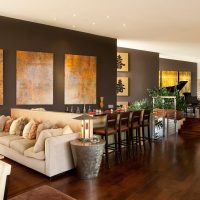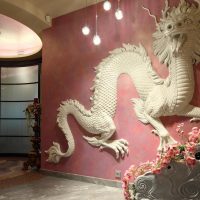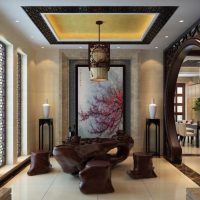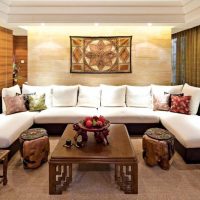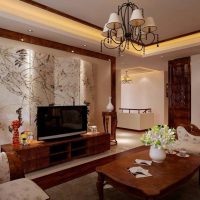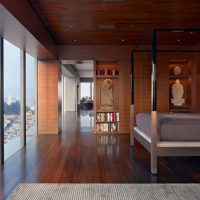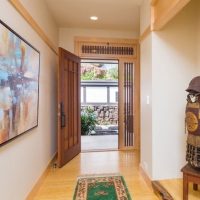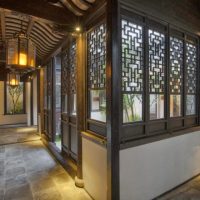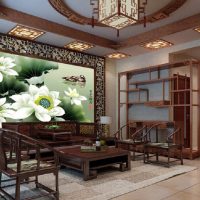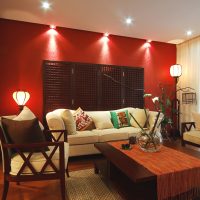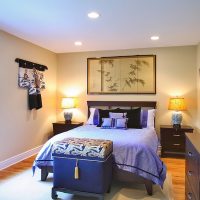Chinese style in the interior of European culture
It seems to an outside observer that Asian nations have a slower flow of time, their culture seems too distinctive and exotic. But it is from here that the mystical doctrine about the energies of Feng Shui, the Japanese and Chinese style in the interior came to us. There are many unsolved secrets lurking here, which is probably why you can endlessly draw ideas for inspiration from here, but also be able to fully adapt the oriental culture of life to the European interior. However, there are many design developments that are worthily embodied in the design of the premises.

Chinese interior is always harmonious and restrained
Content
The specifics of Chinese style
The design of personal space in Chinese culture has been polished for centuries, at the same time reflecting the laws of the flow of energies, a special idea of the beautiful, aloof asceticism and emotional self-expression. Authentic Chinese-style interior design is somewhat different from European stereotypes. Travelers in the distant provinces of the largest Asian country often see not what is presented to us. And the "Chinese" came into fashion palace decoration in the time of Peter the Great.

The color scheme of the Chinese interior is built on the symbolism of red and gold shades, reflecting religious and mythological beliefs
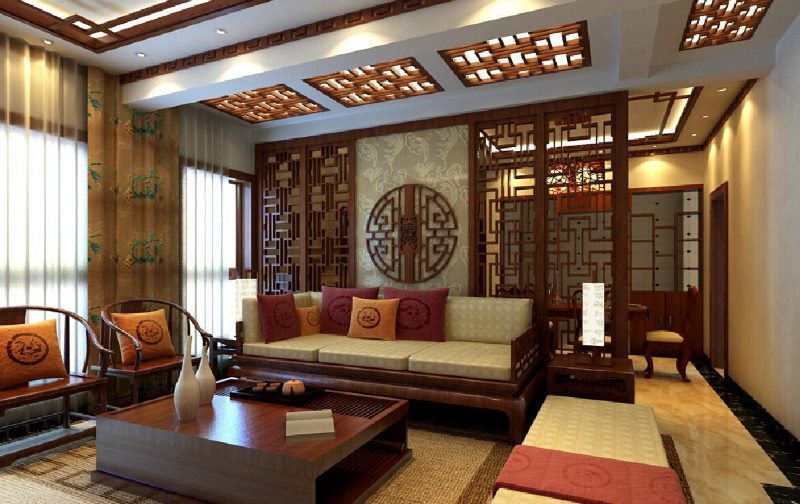
Partitions are distinguished by complex ornate patterns with a large number of small elements
The amazing national flavor of China in the European interpretation is, rather, the scenery with recognizable elements of their culture. Everyone entering this house and contemplating the design of a room in the Chinese style will certainly recognize it by its basic attributes. These are natural materials and bright textiles, hieroglyphics and genre pictures, fans and dragons, figurines of the sages and squat furniture arranged according to Feng Shui. Specialists will certainly notice smooth lines - so as not to interfere with the slowed-down flow of energies in the house.
It can be noted that the color of Chinese interiors has won millions of fans among Europeans today. Stylistics belongs to the ethnic variety, but according to the classification it stands as if apart - because of the doctrine of energy. But the Asian aesthetics itself at first sight beckons with its inimitable beauty, as in the photo.

Yellow or gold colors symbolize power, glory and wealth.
When the whole room is framed according to all their canons, it seems that nothing can be changed and somewhere else it is difficult to repeat. Partly it is - every Chinese interior design is individual. It is developed for specific conditions where nothing can be rearranged, especially from east to west or from north to east. And not every designer is devoted to the details of the most important fundamental principles of this style. And for self-decoration, it is advisable to familiarize yourself with the basic principles of Eastern philosophies.
Outlandish Asian goods have always been highly valued in European markets. Traditional Japanese and Chinese crafts have influenced Europeans' perceptions of aesthetics for at least the last three centuries. Aristocrats and wealthy merchants sought to acquire something like a rare Chinese vase or porcelain tea service, this antiques is still very much appreciated today.

The combination of red, black and white means harmony
Attention! The variegation and desire for a variety of colors are compensated by the fact that there is nothing superfluous in the room. Everything looks pretty simple, but the bright decor, reflecting the specifics of Chinese culture, should look very impressive.

For decoration of walls and furniture, a black and red combination is often used.

Brown and beige shades are also welcome.
It is worth appreciating with what grace the figures of red dragons, outlandish birds, Ussuri tigers and goldfish are drawn, symbolizing the Chinese style in the interior. The tradition of painting deer on velvet rugs came from this eastern neighbor. The latest fashion trend is to display collectibles in the living room in a glass display case with lighting, but this is not “Chinese.”
Asian furniture makers have proposed new woodcarving and varnishing techniques. In Russia, for a long time, good furniture for merchants and landowners' towers was made according to Chinese models. Therefore, Chinese decor has never been alien to our culture. Silks and carpets, dishes and paintings, ceramics and bronze casting have always found worthy application in interiors on a Chinese theme.

Real Chinese furniture has a squat shape

The priority is dark wood furniture
The main features of the Chinese style
The table summarizes the main features of the design of the rooms:
| 1. | Materials of natural origin | Bamboo, wood, paper, stone, terracotta. |
| 2. | Artful finish | Carving, varnishing, inlay with ivory, mother of pearl, gems. |
| 3. | Utility and aesthetics | Each item is functional and beautiful. |
| 4. | Bright palette | Red, yellow, green, black and brown are preferred. |
| 5. | Furnishings | Practical, compact, low, on legs, so as not to block energy. Based on the principles of Feng Shui. |
| 6. | Typical decor and accessories | Pictures on oriental themes, hieroglyphs, tangerine tree in a tub, vases and authentic dishes. |

Gilding - a traditional part of the eastern decor, used on furniture, walls and in textiles
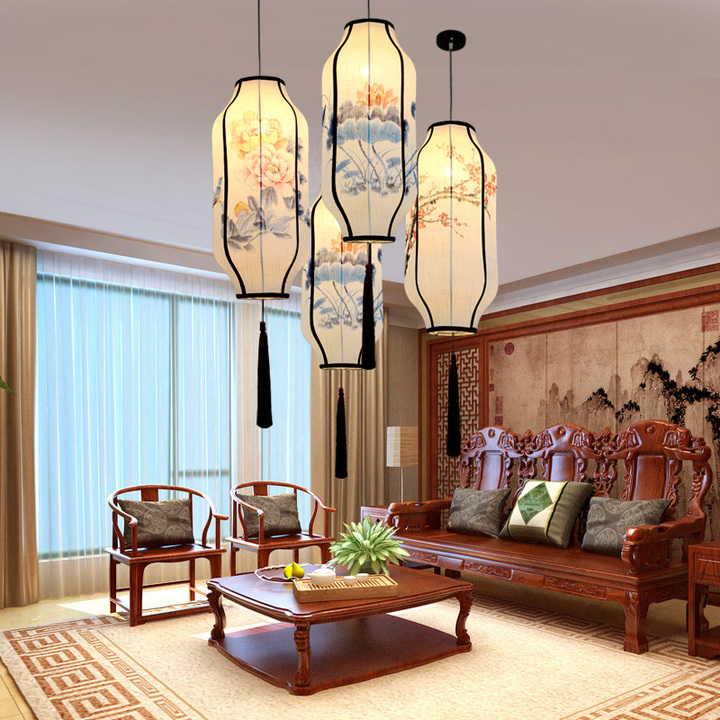
Stylish lights with rice paper shades
Feng Shui Style Features
Chinese culture is based on teachings, beliefs, and complex traditions for the European mentality. The decoration of the meringue home of Chinese interior design should be consistent with the principles of Feng Shui teachings. There is nothing complicated in it, but the arrangement of furniture and piece elements of the same functionality from one set is set in pairs. A certain composition is formed, for example, on different sides of a round lacquered table put 2, 3 or 4 stools with the same interval.

The interior in the Chinese style should be decorated according to the rules of Feng Shui

In the interior, it is not recommended to use sharp corners in furniture and decorative objects.
Decor, symbolizing different energies, is exhibited strictly in a certain corner, against a wall or window. For example, a fountain or aquarium, symbolizing the influx of money, it is better to put in the southeast corner. This element should fit seamlessly into the Chinese-style interior design. It is preferable that each item reflect the interests and lifestyle of the owners of the house, and not just facilitate the influx of energies.
For thousands of years, the Chinese have perfected their design principles, and in those days there was not even such a hieroglyph symbolizing this concept. But for every inhabitant of the Celestial Empire, simplicity and comfort were important, not devoid of decorative value.

The interior is dominated by calm and diffused light of warm colors.
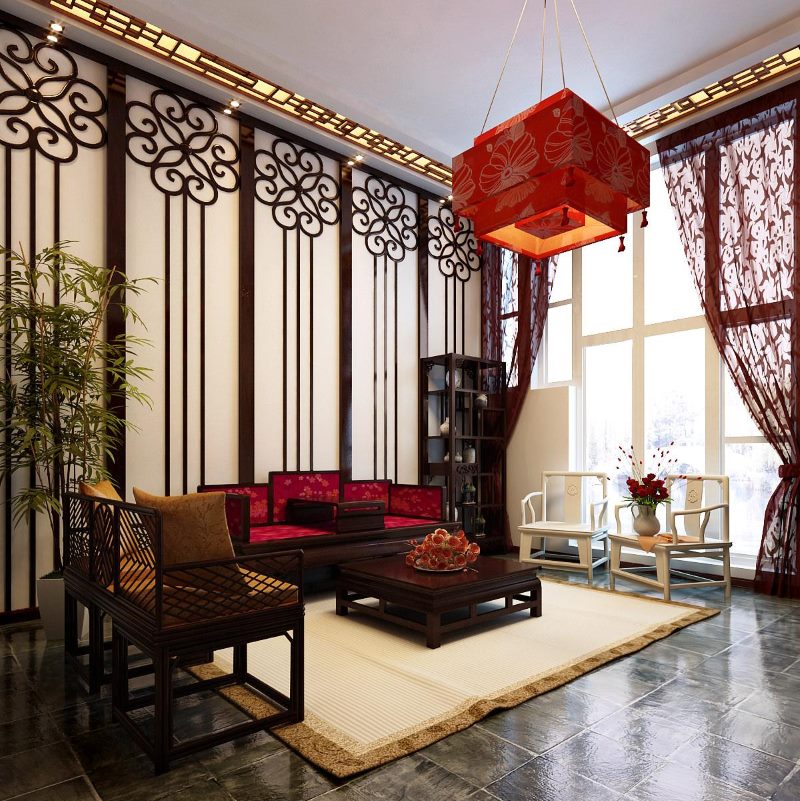
Suitable materials for fixtures - paper or wood, forged products are also relevant

Curtains should not impede sunlight, so in the traditional version there are no curtains on the windows
In order for a peaceful, serene atmosphere to reign in the house, there should not be a blockage of energy twists - this is how Feng Shui adherents teach.However, their homes often use movable screens and partitions for alienation and privacy. Perhaps they also try to shield themselves from evil forces by means of screens during meditation.
The lack of trash and useless things contribute to the flow of energy in the Chinese interior. Everywhere there should be a strict order, preference is symmetry, the absence of broken, broken, torn things. All nations should learn from this.

Carved wood screens are used to divide the room into zones.
Mirrors are not hung at the entrance, beds are not put at the door. It is not necessary to sleep on the passage to the window, all the more so - to be reflected in mirrors in a dream. It is undesirable to see your reflection in undressed form in the bathroom. These and many other ideas form the traditional Chinese-style interior design. The Chinese do not like to fill rooms with decorative things without much benefit, but each accessory has a certain practical and aesthetic value.

Chinese style of interior decoration is more often chosen by calm people with exquisite taste
Tip. Interior design with a claim to "Chinese" should take into account the canons of Feng Shui, without which the Asians themselves are unthinkable about the harmony in the house. However, if you are a beginner, then in your project you can use only Chinese decor and accessories, without focusing on strict adherence to canons.
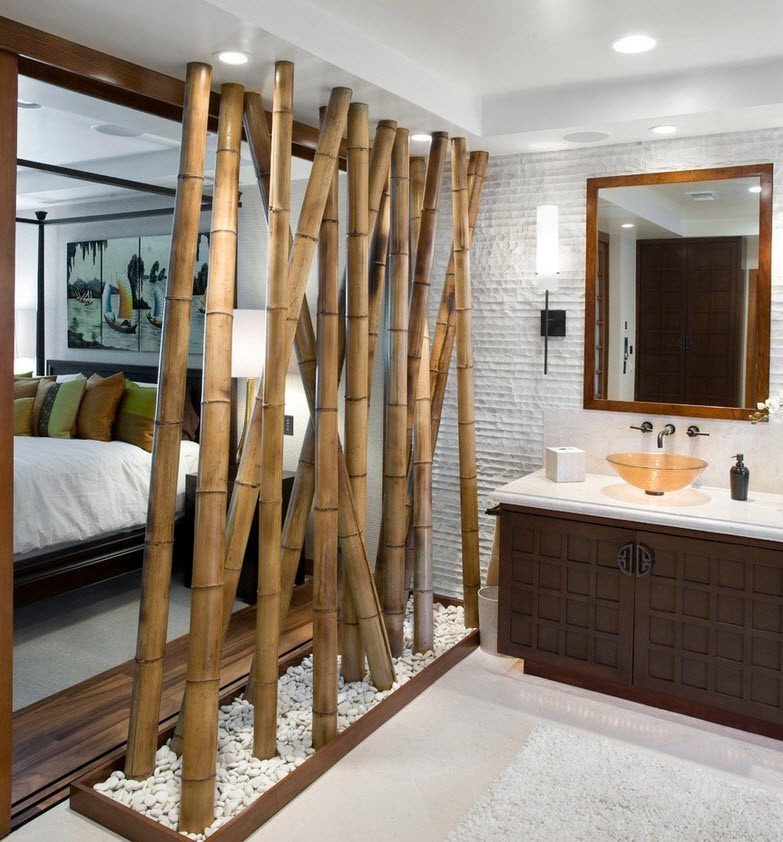
Bamboo in the Chinese interior will be by the way in any form, both as a decoration and as a finishing material
Finishing materials and decor for Chinese interiors
For most ethnic styles, the use of natural materials is typical. Wood and bamboo have not lost their relevance in our days.

For walls suitable paper wallpaper with plants, birds and animals.

You can stick wallpaper with a national painting or with a picture of the Chinese landscape
Finishing Principles:
- Chinese-style walls include plastering and painting. Bamboo and paper wallpapers are possible that were invented by the Chinese. More expensive decor is hand-painted with typical Asian motifs - dwarf conifers, mountain landscapes, fish ponds and birds on flowering branches. In China, each color and motive carries its own symbolism or subtext, so they choose it competently. Decorative wall panels and wooden grilles are also appropriate.
- An insulated wooden floor with heating pipes hidden inside is another invention of Asians sleeping on rice straw mats. Today, the “warm floor” system is mounted under porcelain tile, beautiful tiles or large-format stone tiles. Intricate images on separate plates are appropriate when the entire floor is lined with mosaic patterns with frames and central elements. Parquet is the best, but maybe something simpler (laminate, linoleum), but with a spectacular combination of wood texture in different colors. An array of Chinese-style in the interior is laid on deck, pre-coated with a stain with a red tint, from above you can make a polymer bulk floor with a lacquer effect. Ideally - a complete imitation of bamboo in all variations and a real mat at the front door.
- The ceilings should be light - white, blue, cream or beige. But often bright colors are also used, for example, red or black lacquered stretch fabric with mirror properties. Layered structures resembling Chinese pagodas are also quite appropriate. They successfully create the illusion of volume. Especially when perimeter diode lights and Chinese paper lanterns are used purely for a characteristic decor.

In a room with light walls, a dark flooring will look great

For the design of the ceiling, structures from crossed dark beams are often used.
The Chinese style is an "ode" to bright colors that can be reflected in the decoration, accessory and decor, but everything should be in harmony.The design in the Chinese style is a combination of natural shades of wood, bamboo and terracotta, decorated with a metallic sheen and shades of the element of fire. The complexity of interior design is not to overdo it with bright colors, tiring eyesight. You can achieve harmony with the help of bright accessories against the background of calm shades of the main surfaces.

Floor or table porcelain vases are great as decor

To create coziness, you can add silk pillows.
With typical Chinese accessories, do not overdo it if you use only one bright element in each room. This is a dragon, a large fan with an image of an oriental girl, a picture with Chinese mandarin or a photo of the Caramel Mountains in a bamboo frame. More wonderful examples are in our photo gallery.
Video: traditional Chinese style in the interior


